Families take the lead in MH370 mystery
- Published
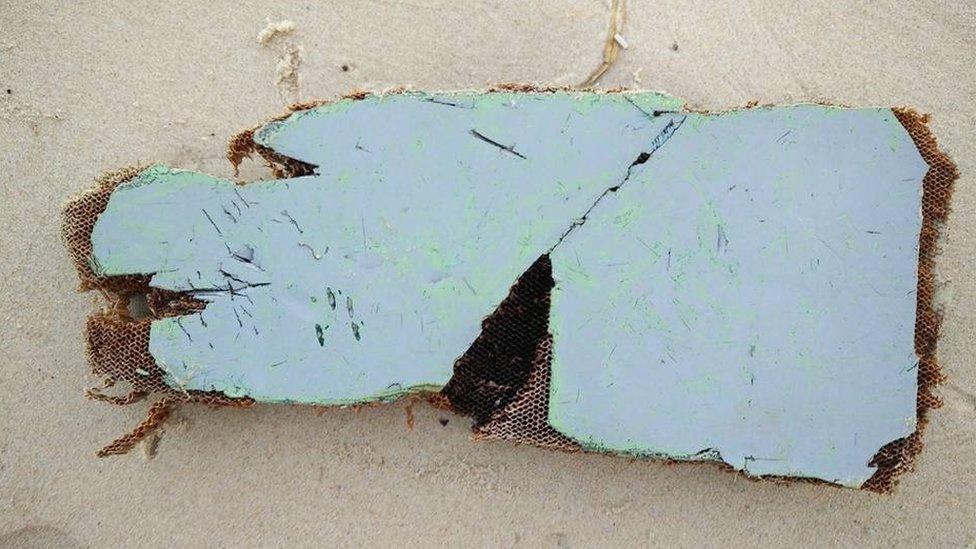
This piece of possible debris was found in Madagascar in June
I've not seen anything like it before.
An aircraft accident investigation driven not by experts, but by a group of the bereaved and an amateur American sleuth who hankers for the truth.
As I write, eight people who lost loved ones on board missing Malaysian flight MH370, together with self-funded traveller and mystery solver Blaine Alan Gibson, are trawling remote beaches in Madagascar, finding what might be parts of the plane.
They've been there for a week and have come across a number of possible pieces so far.
Grace Subathirai Nathan's mother vanished without trace in March 2014. She was one of the 239 people aboard the routine Malaysian flight.
Grace has posted these photos on her Facebook page:
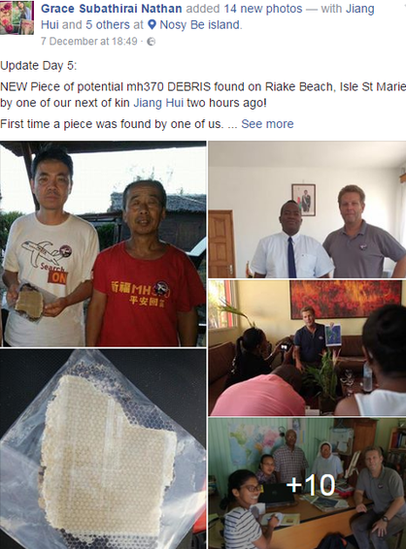
"NEW Piece of potential mh370 DEBRIS found on Riake Beach, Isle St Marie by one of our next of kin Jiang Hui two hours ago! First time a piece was found by one of us. Such mixed feelings now for all of us - pain, sadness, confusion, hope," she writes.
One of those pieces, or a combination of them, could eventually hold the key to unlock this mystery. So far it's the debris washed ashore and found by the public, not the huge underwater sea search, that has given us the best idea of what may have happened on board.
Parts of the wing flap system found on beaches have allowed investigators to surmise that the aircraft came down quickly and out of control, rather than in a gentle controlled glide.
When I spoke to Grace on the phone she told me about their incredible, unique trip.
"Only one local person had even heard of MH370. Some had probably never seen an airliner, but they all understood the pain of loss," she said.
They want locals to become their eyes and ears, looking out for possible plane debris long after the families have returned home.
"We've had brochures printed in English, French and Malagasy. It's a step-by-step guide to what to do. How to handle debris if you find out. To photograph it, and how to get it to the right people.
"It's laminated so fishermen can have it on board without it getting wet. The local tourist board also helped us make a video in Malagasy that we can show people. Some might not be able to read".
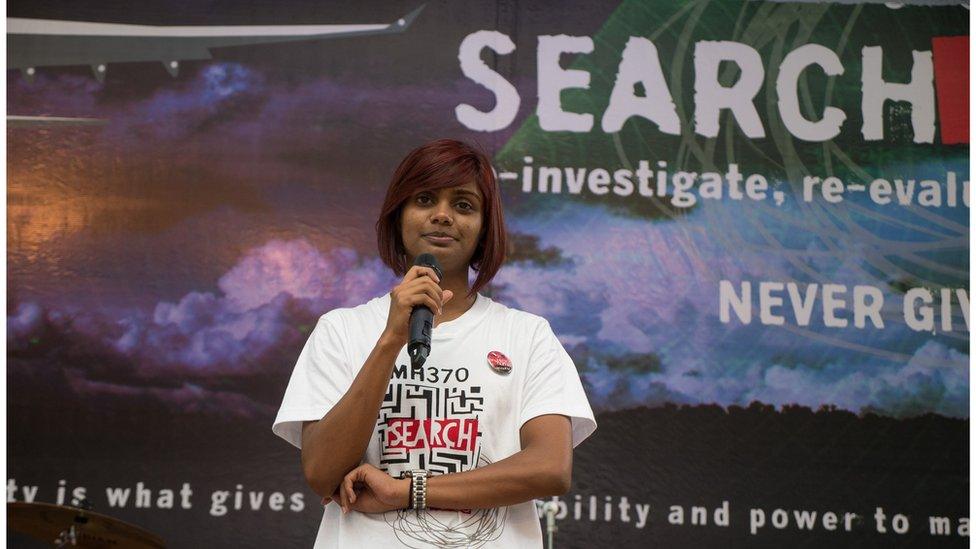
Grace Subathirai Nathan is one of those campaigning to make sure their relatives are not forgotten
They've also recruited the local mayor, who will look after pieces in his office until they can be shipped to experts in Malaysia.
For months now, the families have been questioning why it's down to them, rather than Malaysian officials, to co-ordinate the beach search around the world.
Grace is in Madagascar with a group of relatives from Malaysia, China and France. None of them knew each other before the tragedy. Now they've formed a team that's determined to keep the hunt for clues alive.
The sea search is being wound up soon, so in a couple of months, they'll be the only people looking. The bits they are finding still need to be analysed by experts to see if they are from the missing airliner.
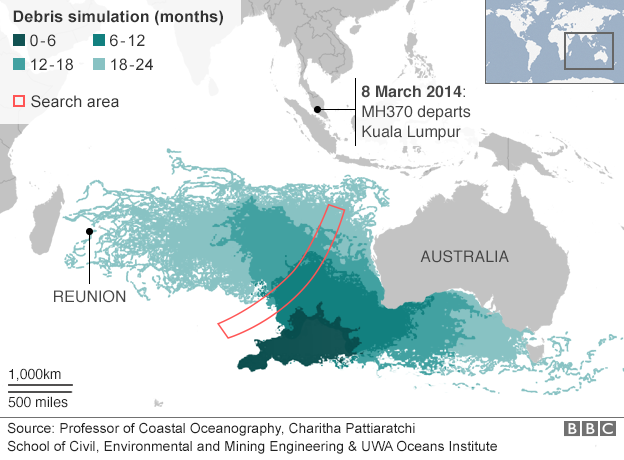
They're washing up thousands of miles from where investigators are convinced the aircraft came down, yet it makes sense when you know how the oceans work.
After months of experiments, scientists have shown that the currents and winds would have carried small, floating parts across the Indian Ocean, to the coasts of South Africa, Tanzania, Madagascar, Mozambique and Reunion Island.
The very places bits are turning up.
It's likely that thousands of clues are lying around undiscovered, because no one is looking for them. Some might be personal effects from passengers. Others might hold small clues to what happened. If it's fire damaged for example, that could point to an accident, not a deliberate act.
It's one the world's biggest mysteries, yet it's coming down to the loved ones, the bereaved, and an American who craves the truth, to keep this search alive.
- Published2 November 2016

- Published17 January 2017
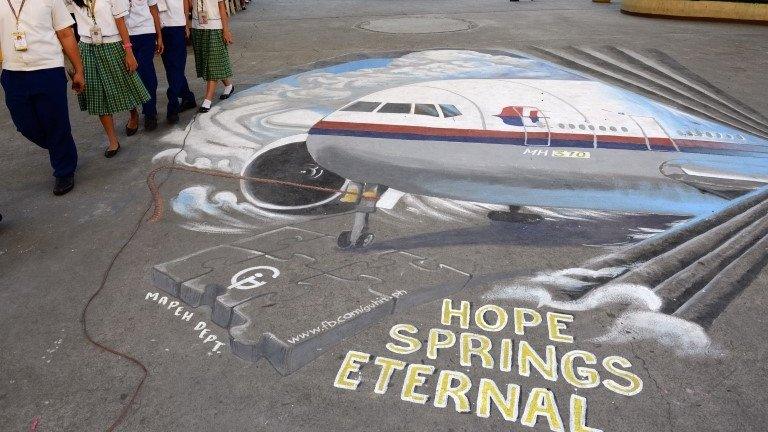
- Published15 July 2016
